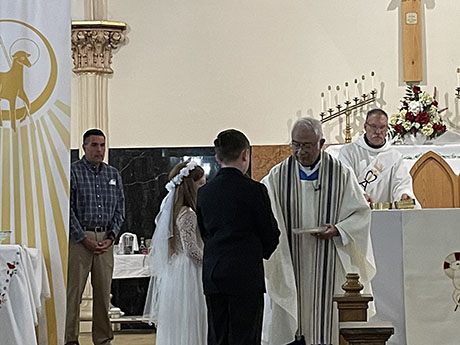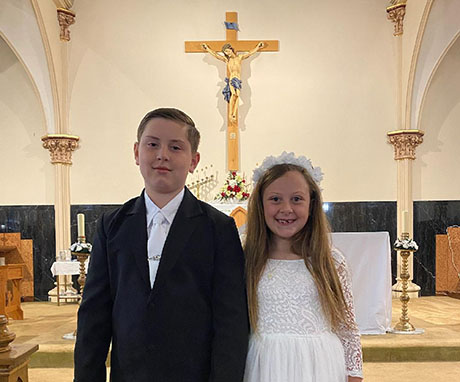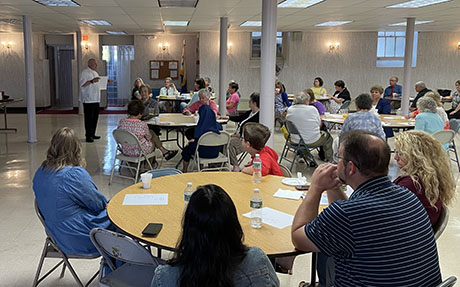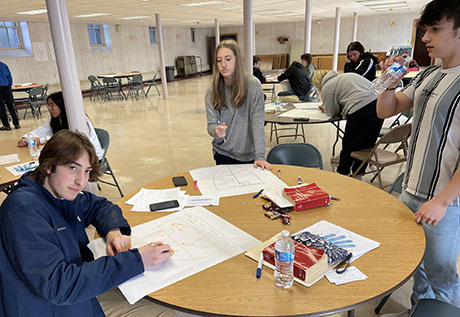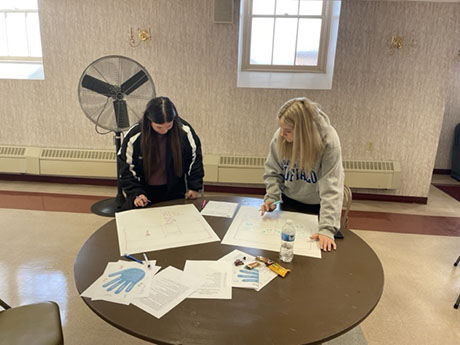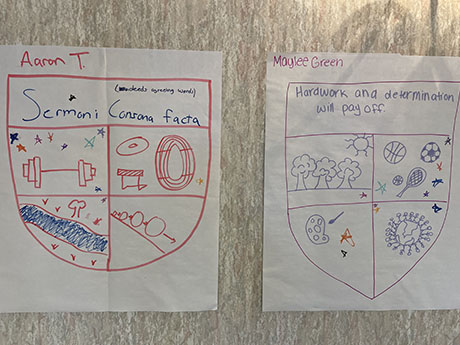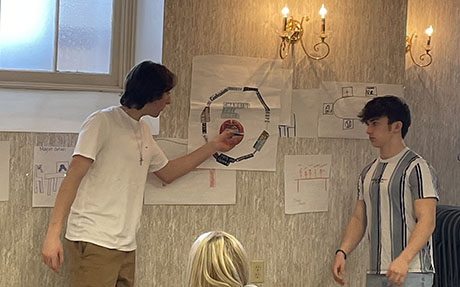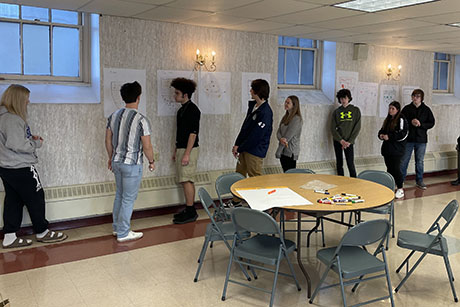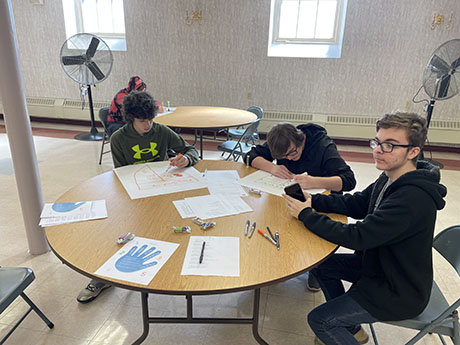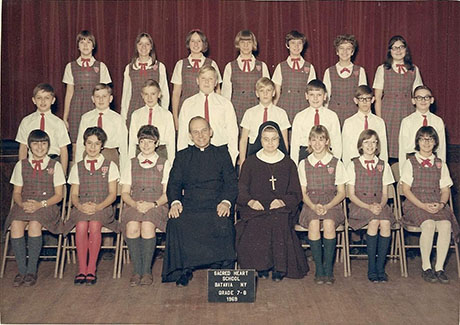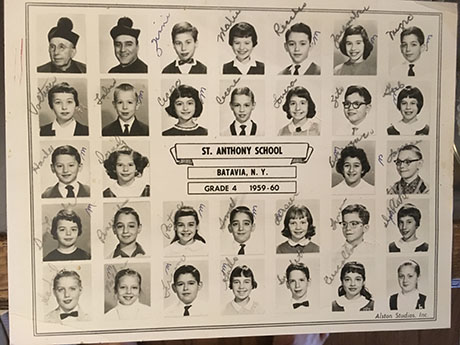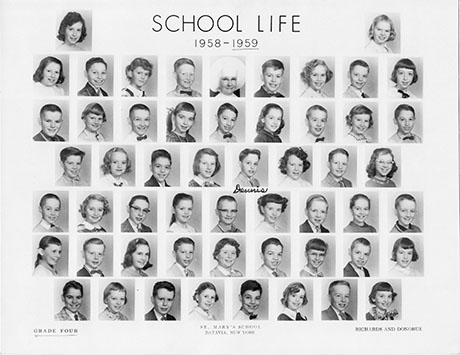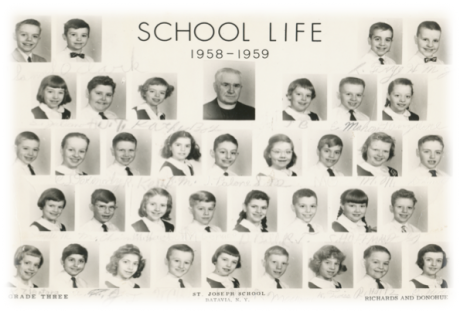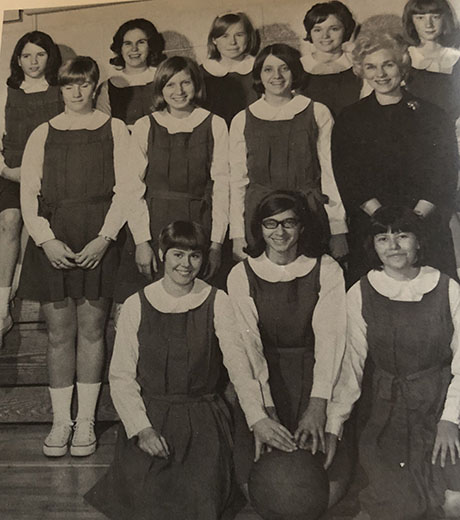St. Mary's Church, of Batavia, got a visit from the Blessed Virgin Mary Monday night. The church at 20 Ellicott St. was one of her last stops in Genesee County as she tours the Catholic Diocese of Buffalo.
The International Pilgrimage Statue of Our Lady of Fatima has been crisscrossing the Western Hemisphere for the past 64 years (there is another statue made for pilgrimages in the Eastern Hemisphere). It was sculpted in 1947 by Portuguese sculptor Jose Thedim, who based it on descriptions provided by one of the children who received visions of the Virgin Mary at Fatima, Portugal, in the summer of 1917.
According to Carl Malburg, one of the statue's custodians, the Bishop of Fatima commissioned the Pilgrimage Statue 30 years after the three children -- Lucia, Jacinta and Francisco -- received the visions.
"The idea came from the message," Malburg said. "It was meant for all the world, not just the people of Fatima."
"Fatima is not over," said Malburg's fellow custodian Patrick Sabat (pictured below), referencing Pope Benedict XVI. "There is a continued need for prayer and penance."
Addressing the people who attended Monday's service, he added: "Pope John Paul II said the message of Fatima is more urgent and more relevant now than it was in 1917."
Much of the content of the Fatima visions -- which began on May 13 and occurred on the 13th of every month until October -- deals with the harm that human sins do to the world, leading to war and destruction. The Virgin Mary reportedly told the children that if enough people carried out her instructions, there would be peace on Earth.
"Pope Benedict XV (who was Pope at the time of the Fatima visions) called Mary the Queen of Peace," Sabat said, adding that her intercession would work "when all human efforts at peace had failed."
Malburg, of Indiana, and Sabat, of the Philippines, escort the Pilgrimage Statue in its travels on behalf of the International Pilgrim Virgin Statue Foundation, which is based in Munster, Ind. With permission from Bishop Edward U. Kmiec, they are making a 21-day trip through the Buffalo diocese.
Interestingly, the Buffalo diocese was the first place the statue visited in the U.S. on her very first pilgrimage in 1947. One of her stops was Our Lady of Fatima Church in Elba.
"And we thought, 'Why not bring her back?'" said Sally Ross, Ph.D, a member of St. Padre Pio Parish (which includes Our Lady of Fatima in Elba and St. Cecilia's Church in Oakfield).
Ross was the one who came up with the idea of bringing the statue back to Western New York for a pilgrimage. It all started when she, as a member of Our Lady of Fatima, did some research into how her church got its name. She learned three interesting facts about the Elba church:
1. The Pilgrimage Statue's visit in 1947.
2. It is the oldest church in the U.S. to bear that name.
3. The knoll in front of the church on which the Fatima Shrine is now located was once used by the Ku Klux Klan as a place to burn crosses.
Fact number three is especially interesting if you think about the Fatima message.
"Our Lady wants all her children to live together in peace and harmony," Malburg said. "She said that if we follow her instructions, there will be peace."
To that end, Sabat called everyone to be "Prayer Warriors."
"This is a different kind of war," he said. "It's a war of reparation for the sins of the world."
According to a pamphlet from the International Pilgrim Virgin Statue Foundation, fighting this war includes making each of one's daily sufferings a sacrifice in atonement for sin, praying the Rosary every day, and wearing the brown scapular as a sign of consecration to the Immaculate Heart of Mary.
Miracles and favors have been reported in areas the statue has visited over the years. One of the most famous of these miracles is the "Miracle of Tears," which refers to reports of the statue crying human tears in more than 30 instances.
While there may not have been any tears in Western New York so far, people have been affected by the statue. The pilgrimage isn't over yet, and Ross has already gotten some follow-up calls.
"I wish I could have recorded them, (as they talked about the message)," she said. "Even just the timbre of their voices...it's just incredible."
As much of an impact as the statue has had, Sabat and Malburg were both very clear that Catholics do not worship Mary or statues.
"A statue's just a piece of wood," Malburg said. "And the person it represents (Mary) is not divine. But we do talk to her and ask her to pray for us."
He also said that he sometimes meets fundamentalists who object to giving this type of honor to Mary. To this he replies, "You have a guardian angel, don't you?" His point is that Catholics talk to Mary the same way most Christians might talk to their guardian angels.
"Mary is still the greatest catechist (teacher of the faith)," Sabat said. "She's a role model for all Christians, and we continue to imitate her virtues. Our goal is to be as close to Christ as possible, and she was the closest person to Christ there ever was."
St. Joseph's Church welcomed the Pilgrimage Statue at Mass this morning. It is heading to Orleans County today, but will return for a visit to the New York State Veterans' Home on Aug. 19. All total, it will make seven more stops throughout the region before the pilgrimage concludes on Aug. 22.
For more information, go to www.pilgrimvirginstatue.com.
Supplemental Video: Malburg and Sabat on local news show in Cincinnati

